Compare notes of:
- Thrax Phono (17,500 Eur), with Anamighty Sound’s own 4000 Eur Le Phono, and Phasemation EA 5000 (7,000 Eur)
- STST Motus II (suspended DD, 7000 Euro), PTP Lenco (2800 Eur), Doehmann Helix 2 (24,000 Eur), Technics SP10r in Schick Plinth
- Schroeder CB and Schick tonearms
- Allaerts boron mk2 to Finish Gold.
- Allaerts, Top Wing Red Sparrow, MSL Ultra Eminent, Art 1000
Anamighty Sound (previously Calamighty Sound) is a well-known vinyl services shop located in Paris, and what I consider to be an oasis in these days of heavily marketed highly priced incorrectly installed hifi. Anamighty at core are retippers, they have retipped around 2000 carts, including vintages like DSTs and EMTs, and current high end carts ranging from Lyra to Koetsu to Allaerts.
Tonearms: On my first visit, we started with the PTP with Schick arm and compared with the PTP with the Schroeder CB. The Schroeder CB arm to me did everything better than the Schick. Better stage, more resolution, more decay, better mids and bass, better highs. It was also more complete, musically.
Cartridges: We then started with the Jan allaerts Finish Gold on the STST Motus, vs the PTP with the Allaerts boron mk2, both TTs with the Schroeder CB arm. I immediately noticed that the PTP was having more drive and body, though the STST was sounding more extended and with a bigger stage. I requested that the carts be swapped. Now the STST had the best of both…it had the drive and the body added to it. Further compares concluded that the lower model of the Allaerts, the boron mk2 (second from the bottom), which has 0.65 output and loads at 100 ohms, did have more body, midbass, and drive, than the next model up, the Finish Gold, which has 0.2 output and should ideally load at 845 ohms. I was advised this when I initially bought my Allaerts from Audio Arts, but it was good to have verified the same. The Finish Gold has a bit more detail and tries more for a pretty sound, but I can see people preferring the Boron mk2. I certainly do.
STST Motus vs PTP Lenco: As we went through the compares, the STST was to these ears a few levels above the PTP. It had a more coherent and larger stage (wider, deeper, larger top to down), more musicality, better bass, the mids and highs were more organic, and the detail throughout was greater. The STST is priced at 7k Eur vs PTP’s 2800.
More carts: Then we moved to the Top Wing Red Sparrow. This was my first compare of the Red Sparrow, since then I have done it in the FM 123/Thrax/Fabrizio phono shootout, and have heard it multiple times with the Vyger, Thomas Mayer, and the Pnoe horns (report to be published). Except in the Vyger Pnoe system, in the other two systems, it has come across as a cart with nice highs and liquidity, but a lack of midbass making it sound thin and a lesser stage than the other carts compared against. In the Vyger Pnoe system, it sounds transparent and liquid and fast like Lyra/VDH, with great highs, but is also balanced and linear through the body. We also tried a Koetsu Urushi, but I dismissed it immediately. I have never heard a Koetsu sounding remotely right except with a FR 64/66s. And Urushi is my least liked of the Koetsus.
All the cart shootouts on Day 1 were using the Le Phono. Anamighty is also a dealer for Thrax, and since they did not have the Thrax phono then, we decided to schedule another day for the phono shootout.
Thrax vs Phasemation EA 500 vs anamighty’s Le Phono
The phono shootout on Day 2 was done between Le Phono, Thrax, and Phasemation EA 500 using the Art 1000, MSL, and Anamighty Sound’s own cart. With each cart, we compared the phonos record by record.
We started off with the Doehmann Helix 2. I have had exposure before to the Helix 1 (top model) during the VTL 750 vs MSB 204 compare and during the FM/Thrax phono compare.
I can go record by record what the differences were. Instead, for the sake of greater clarity, I will just say what my preferences were and what the conclusion was, and mention those records that stood out.
When we played the Art 1000, The Thrax was not a good match. The Phasemation was the most consistent – not necessarily better on every record, but on some – and at 7k Eur and half the cost of the Thrax, I just did not feel the Thrax could be justified. The Phasemation was clear, equally liquid, and on some records more open, and showed a higher dynamic range. This was especially noticeable on a DGG-Debussy-La Mer-Giulini. The soft flow and rise of La Mer, of the waves washing over you, was captured more distinctly and with a more involving tone by the Phasemation; the distance travelled by the notes between the lows and the highs especially more impressive as compared to the Thrax. Similar was the case for the RCA German press of Schubert’s 9th/Munch (which is better than my Decca ED1 performance, conducted by Krips). The horns in both performances had better tone with the Phasemation.
On Henryk Szeryng’s Lalo Symphonie Espagnole Classic Records, all three phonos were equal, maybe the Thrax showed a marginally larger stage, but all had a big open stage anyway. However, the Rubinstein Emperor RCA Red Seal sounded compressed on the other two phonos while it stayed open on the Thrax. The Piano harmonics on the Thrax were consistently better, though not by much. The Le Phono had a similar character to the Phasemation, just that the latter bettered the Le Phono in adding the finer details of resonances of the instrument body. Phasemation and Thrax also had a larger stage than the Le Phono. The SS phonos were flatter compared to the Thrax from a front to back perspective, but I was fine with that mid hall presentation.
Every now and then we tried the MSL step up, with each cart, in both the Thrax and the Phasemation. Each time, I noticed that the SUT added more dynamics, bass, and cleanliness, also lowered the noise floor. But it was not necessarily better on each record. On some, it would bring the sound artificially forward, and the stage would not sound as natural. However, this changed record by record, and differed based on the cartridge…so that I am led to conclude, any person without a high gain phono or a noisy phono should have a SUT at his disposal, if he wants to try out different carts. It gives you added flexibility, and can sound good with certain records, and not so good with some.
I did look for lack of either flow or tonal color on the SS phonos as compared to the Thrax – I could not find any.
Now, as we shifted to a higher output MSL cart (0.3), the Thrax developed more rise and drive than it had before. While the Thrax lacked flow on the La Mer with the Art 1000, with the MSL it sounded fine. This clearly showed that it was benefiting from the higher output. With the MSL too, we had similar preferences. The Bruch Scottish Fantasia violin sounded better on the Phasemation than the Thrax. The Philips mono of Arthur Grumiaux playing Saint Saens with Manuel Rosenthal sounded astounding on all three phonos. It also led to my French hosts correcting my pronunciations of Grumiaux and Saint Saens.
I now decided to add more tuttis. So we played the 4th movement of Scheherazade and Beethoven’s 9th. We realized that as the music grew more complex, the Thrax stayed more coherent, expanding each note with better balance. It did not necessarily have the most macro slam impact. However, Thrax had the flexibility of having its own inbuilt SUT in one input, and the ability to add the MSL SUT to it. This altered its balance depending on the record and the cartridge.
STST Motus vs Doehmann Helix 2:
We then decided to compare the STST with the Doehmann helix 2 with the Art 1000 mounted on both. The STST had a 12” Schroeder CB, and the Doehmann had the 9” one. At less than 1/3 of the price, the STST is a serious TT with high price/value ratio. I think it should be compared to the Schopper 124 and the Feickert Firebird as well as restored SP10 mk3s to assess its value. The STST did well against the Doehmann. The Doehmann was more neutral, more linear, and virtually colorless. It had a larger stage, but that did not mean the STST had a small stage. Without comparison, you would not have noticed the difference in stage size. The STST had a color in the midbass that existed in every record, that gave it a fullness, possibly from its suspension but overall it was extremely pleasant and organic to listen to.
I can easily see a scenario where a customer walks in, listens to Anamighty’s different price points, and walks away with the STST, Anamighty’s own cart, and the Le Phono or the Phasemation phono. This is where the value cut off is. Another customer, who would not want to leave anything on the table because he has the money to indulge, will go all out and buy the Doehmann, the Thrax, a SUT, and get Anamighty to install the Schroeder LT. Anamighty’s price progression is quite smart and sensible. Their value price-point vs their all-out proposition makes sense, and the latter would require a very high res system to do justice to the differences.The SP10r with the Schick plinth and the Schick arm did not sound as good. This could be for a host of reasons, so I will wait till I hear it in another set up or plinth. As such, the older SP10 mk2s, and the new 1200s have impressed more.
Anamighty’s own cart: One of the biggest surprises I had was the Anamighty sound cart. Being expert retippers, Anamighty Sound are modding Denon 103s. These carts are fantastic. They are fresh, detailed, the dynamic range is larger than the other carts, especially microdynamic bloom. Each piano not sounded better, and the piano resonance was better heard. Neutrality of Lyra, yet a fuller note, more decay. The only issue is, this cartridge is like a Diva. IT is extremely low output, around 0.1, needs to be set up with the Le Phono, and Francois had to do a few adjustments to get it singing. At the end, we got some of the best sound, especially tones, from the entire demo using this cart through the MSL step up into the Thrax. The dynamics of the cart were easily larger than the others, and with the Le Phono, the tympanis on Beethoven’s 9th first movement were the thunderous. The flip side was that I preferred the Art 1000 more on violin.
I am now interested in comparing the Phasemation EA 1000, the top model, one above the EA 500 that I heard. It retails at 11k Eur and is DHT as opposed to the SS 5000. The rectifier is the 5U4G (same as the Lampi and the Allnic), and the JJ valves would imply large gains to be had from tube rolling.
If I think about my SS vs Valve phono shootouts,
1. Allnic, Aesthetix have consistently won and I rate similar. The Allnic H7000 was also preferred to Soulution
2. Burmester PH 100 was preferred to the AR PH7 with the Fuuga. While the AR PH7 is not a top model, I was told up to the AR Ref 2, my preferences would be similar (I never confirmed)
3. Thrax stood out against FM 123, and was better today on some carts.
4. Airtight 2005 was quite superior to more than twice the price Musical Fidelity.
5. Thomas Mayer phono was better than the Vyger phono
6. Lyra Connoisseur was preferred to the Tron
7. I would be interested in comparing Allnic, Thrax, and Thoress
Rest of the system
One of the most delightful things about the Anamighty Sound system was how different each LP I put on the table sounded. The recordings really shone through differently. There was pleasure in playing LPs. The price of the equipment did not matter, and though I went for a component compare, I came back delighted with the musical sessions. Francois, Xavier, and Frederic are a fun to hang out with, and I wish I knew some basics about turntable set ups to absorb the set up tricks that Francois kept passing during these sessions.
For the amps, we used the Thrax Ares, a one component integrated digital, analog, and amp box.
– independent power transformers and regulators for Digital, Control and Analog circuits – Separate power supply for each power amplifier (true dual mono)
– no feedback output stage
– innovative non-switching class AB topology
– 120W/8 ohm 200W/4ohm
– Silicon Carbide rectifiers
For speakers, the ones you see at the side of the rack below are the Suesskind Audio’s Beo Lx. However, we did not listen to these. We instead listened to the next model down, the Progress Lx. In the pic below you see the Progress LX and the Progress (the smallest), which Joachim Gerhard, founder of Audio Physics, developed as an answer to the 25k Audio Physics Virgo after losing Audio Physics. The Suesskind Audio models are priced between 4.4k to 6.8k Eur.
The Progress Lx, small speakers in a big space
The cables are made by Anamighty themselves, nothing expensive, just serious shielded stuff that stops systems from humming when they are installing analog or any system at a client’s.
What I liked best here was the Hifi Quotient of keeping the big speakers at the side and allowing the smaller speakers to play in such a big room. Audiophiles and their egos will find it difficult to appreciate how small their speakers actually need to be to address compromises in room size and treatment. Unlike bigger cones, these do not cause a one tone tell tale bass boom note – they just simply open up and let the music from the LP flow through behind them and around them. The simplicity of the system allows each record to be heard as is, with minimal colour. I remember once having compared the Magico S1 Mk2 and the S5 at Rhapsody in NY, who has a relatively well sized and well treated room. While the S5 had a bit more weight, the S1 Mk2 actually disappeared and the lack of bass interaction with the room allowed me to focus on the music more than the bigger brother. The size of the speakers, and the simplicity of the cables let the change in the sound of the LPs flow through, allowing the performance and the recording to lead the reproduction of realism
How did we manage to do these swaps so quickly? Francois, Javier, Frederic are experts at set-up, adjusting VTA, anti-skating, tuning. They were extremely quick and excellent at tuning to the system – here they are at work.
Francois adding the second Art 1000. How many dealers keep so many carts in stock for compares? How many have a Schroeder LT in stock, which they did when I first visited them?

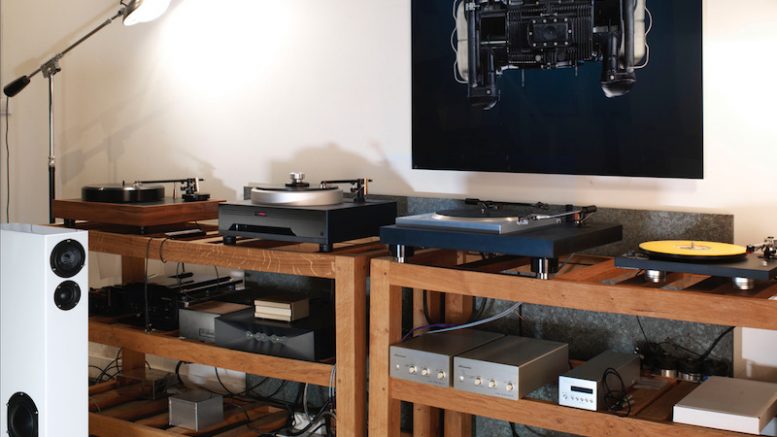
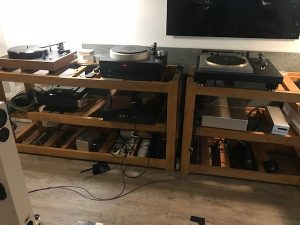
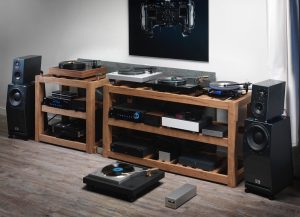
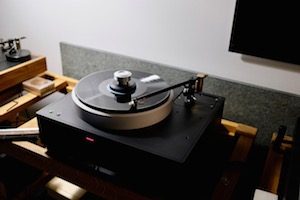
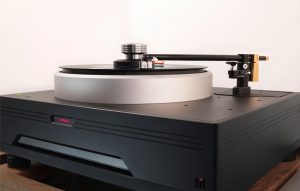
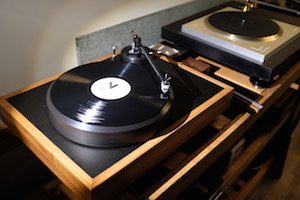
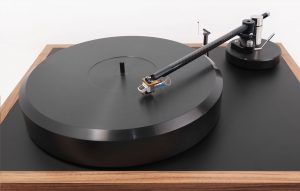
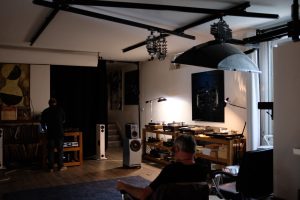
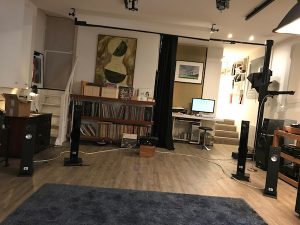
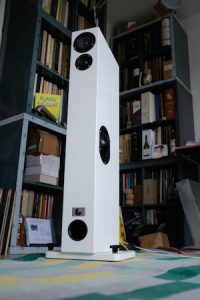
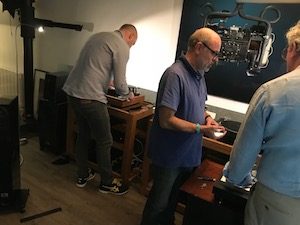
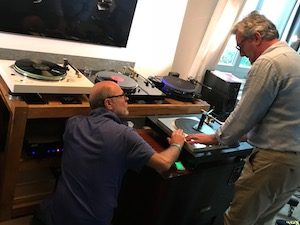
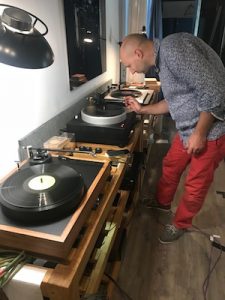
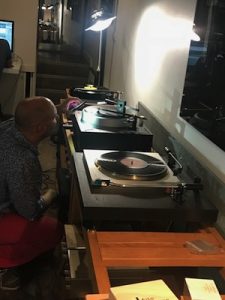
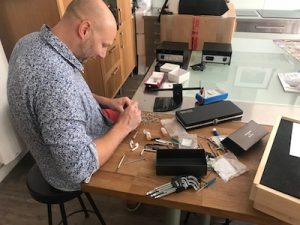
Excellent write-up, Kedar. I particularly enjoyed this, not just because it goes into detail like all your other ones, but the review, most importantly, also isolates the attributes of the component that is making the difference. It’s hard work to logically isolate individual component’s strengths while juggling with so many variables and p&c.
Kudos….
Sweet Kedar…regarding Bob at Rhapsody in NYC, he needs to add a bedroom and bath to his showroom…I would move in :)!
Cheers!
Alan